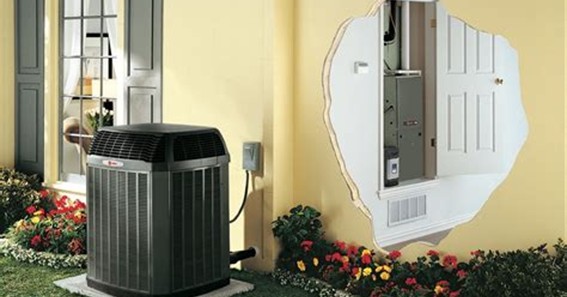A heat pump AC combo system is an innovative HVAC solution that provides both heating and cooling from a single unit. This dual-functionality makes it an energy-efficient and space-saving option for homeowners seeking year-round comfort.
What is a Heat Pump AC Combo?
A heat pump AC combo system combines the functions of an air conditioner and a heater. In warmer months, it extracts heat from inside your home and releases it outdoors, cooling your living space. During colder months, it reverses the process, drawing heat from the outside air and bringing it indoors to warm your home. This system eliminates the need for separate heating and cooling units.
Benefits of a Heat Pump AC Combo
1. Energy Efficiency
Heat pump AC combos are known for their high energy efficiency. By transferring heat rather than generating it, these systems can reduce electricity usage significantly, leading to lower utility bills. According to ENERGY STAR, switching to an air-source heat pump can lower energy bills and improve indoor air quality.
2. Year-Round Comfort
With the ability to both heat and cool, a heat pump AC combo ensures a comfortable indoor environment throughout the year, adapting seamlessly to seasonal changes.
3. Space-Saving Design
Combining heating and cooling functions into one unit saves space, making it ideal for homes with limited room for separate systems.
4. Environmentally Friendly
Heat pumps reduce carbon emissions by using electricity more efficiently and eliminating the need for fossil fuels. This contributes to a smaller carbon footprint and a healthier environment.
Cost Considerations
The cost of a heat pump AC combo system varies based on factors like system size, efficiency rating, and installation complexity. On average, the installed cost ranges from $6,000 to $25,000. While the initial investment may be higher than traditional systems, the long-term energy savings and potential tax incentives can offset the upfront costs.
Installation Process
Installing a heat pump AC combo involves several steps:
- Assessment: A professional evaluates your home’s heating and cooling needs.
- Selection: Choosing the appropriate system size and model.
- Installation: Setting up the outdoor unit, indoor air handler, and connecting ductwork.
- Testing: Ensuring the system operates correctly and efficiently.
It’s recommended to hire certified HVAC professionals for installation to guarantee optimal performance and compliance with local codes.
Maintenance Tips
Regular maintenance is crucial for the longevity and efficiency of your heat pump AC combo:
- Filter Replacement: Change or clean filters every 1-3 months.
- Annual Inspection: Schedule professional check-ups to inspect components and refrigerant levels.
- Clean Surroundings: Keep the outdoor unit free from debris and vegetation.
Proper maintenance can extend the system’s lifespan and maintain energy efficiency.
FAQs
1. Is a heat pump AC combo suitable for all climates?
While heat pumps are efficient in moderate climates, their heating efficiency can decrease in extremely cold temperatures. In such cases, a supplemental heating source may be necessary.
2. How long does a heat pump AC combo system last?
With proper maintenance, these systems can last between 10 to 15 years.
3. Can I install a heat pump AC combo in an older home?
Yes, but it may require ductwork modifications or upgrades to accommodate the new system.
4. Are there any incentives for installing a heat pump AC combo?
Many regions offer tax credits or rebates for energy-efficient HVAC systems. Check with local authorities or energy providers for available programs.
5. How do I choose the right size system for my home?
A professional HVAC contractor can perform a load calculation to determine the appropriate system size based on your home’s square footage and insulation.
Incorporating a heat pump AC combo into your home offers a streamlined, efficient solution for year-round climate control. By understanding the benefits, costs, and maintenance requirements, you can make an informed decision that enhances comfort and energy savings.










